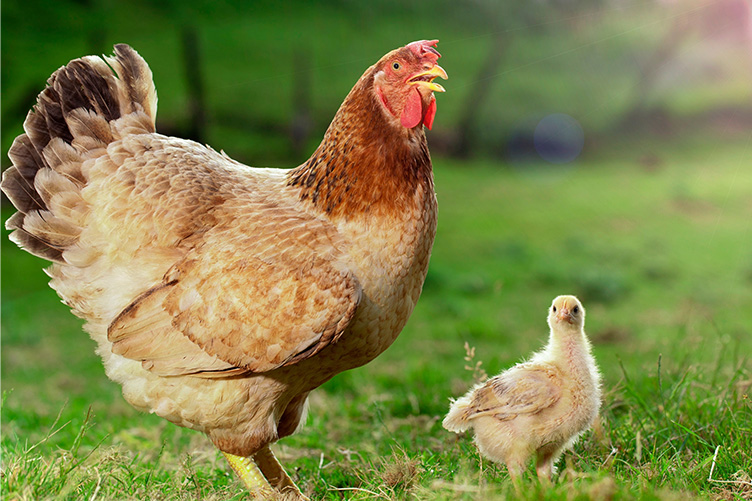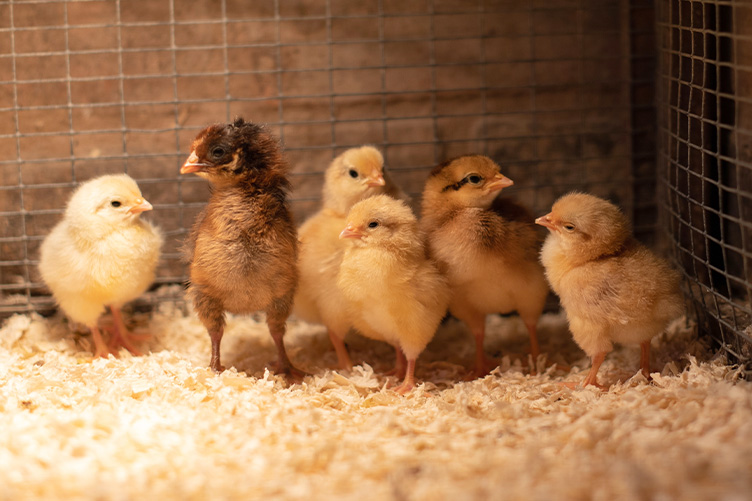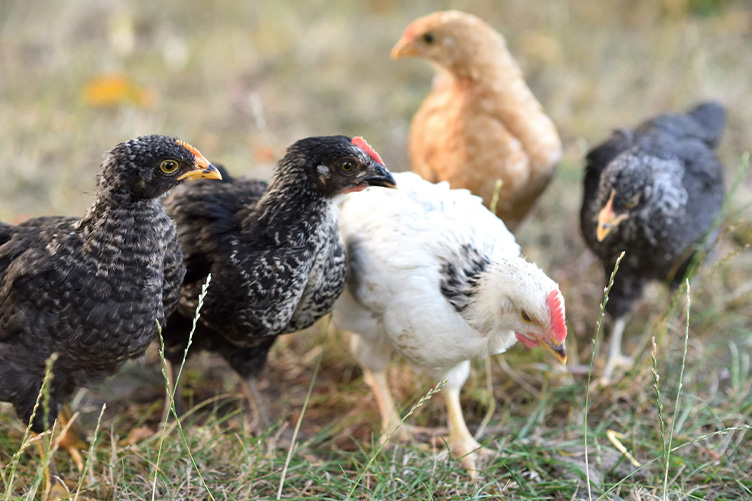
Spring peeps have arrived, a sign that adorable chicks may be on their way to join your existing flock. While the prospect of fresh eggs and fluffy newcomers is exciting, integrating new chicks can be a stressful experience for both the existing hens and the chicks themselves. With a little planning and patience, you can create a smooth transition and ensure a happy, harmonious coop.
Quarantine and The Early Days

Before the chicks even arrive, it’s crucial to establish a separate brooder area where they can thrive for the first few weeks. This allows for proper care tailored to their specific needs and helps prevent the spread of any potential diseases they might be carrying, even if vaccinated. A minimum quarantine period of 4 weeks is recommended.
Additionally, this will give the chicks a safe haven to grow! The chicks should ideally be 8-12 weeks old and fully feathered before you transition them to the chick coop. Learn more about how to raise chicks.
Preparation is Key: Coop Setup

While your chicks are busy growing up, you can get to work ensuring that your existing coop is ready for the new additions. Here’s a checklist of things to prepare prior to moving your chicks from the brooder to the coop:
- Ample Space: Chickens establish a pecking order based on dominance. Overcrowding can exacerbate tensions, so make sure there’s enough space in the coop and run for everyone to roam comfortably. A good rule of thumb is 4 square feet per chicken in the coop and 10 square feet per chicken in the run.
- Extra Feeders and Waterers: To avoid competition and ensure all the chickens have access to food and water, provide multiple feeders and waterers throughout the coop and run. Consider using chick-specific feeders and waterers for the newcomers until they are big enough to use the adult ones comfortably.
- Elevated Roosting Space: Chickens naturally sleep perched on roosts. Provide enough roosting space for all the chickens, with the adult hens having the highest perches and the chicks having lower roosts they can easily access.
The Introduction Process: A Gentle Approach

Once the chicks are at least 6 weeks old (ideally 8-12 weeks), feathered, and healthy, it’s time for the introduction. It is VERY important that you do not do this with the young chicks; it can have fatal consequences. Here are some effective methods for a gradual and stress-free integration:
- The Acclimation Pen: Set up a secure enclosure within the run using hardware cloth or chicken wire. This allows the chicks to see, smell, and hear the existing flock while remaining safe from any potential pecking or aggression. Over a few days, observe their interactions and adjust the time they spend together as they become accustomed to each other.
- The Nighttime Introduction: This method takes advantage of the flock’s calmer state at night. After the hens have settled on their roosts, carefully place the chicks next to them, ensuring there’s enough space for everyone. In the morning, they’ll wake up side-by-side, hopefully minimizing initial squabbles.
- Supervised Flock Time: Once the chicks seem comfortable with the visual and auditory presence of the flock, allow for supervised playtime in a shared space. Start with short sessions and gradually increase the duration as they interact peacefully. Keep a watchful eye and intervene if any bullying occurs.
Maintaining Harmony: Tips for a Successful Integration
Here are some additional pointers for a smooth flock integration:
- Minimize Stress: During the introduction process, avoid loud noises or sudden movements that might startle the chickens.
- Provide Distractions: Scatter some treats or scratch in the coop and run to keep the chickens occupied and minimize pecking at each other.
- Observe and Intervene: Monitor the interactions between the chicks and the flock. If any persistent aggression occurs, separate the groups and reintroduce them later.
- Maintain a Consistent Routine: Changes in routine can be stressful for chickens. Stick to their established feeding and coop cleaning schedules as much as possible.
Patience is a Virtue

The integration process can take anywhere from a few days to a few weeks, depending on the temperament of your existing flock and the personalities of the chicks. Be patient, observe their interactions, and intervene if necessary. With a little planning and the techniques mentioned above, you can successfully welcome your new chicks and create a happy, thriving coop for all your feathered friends.
